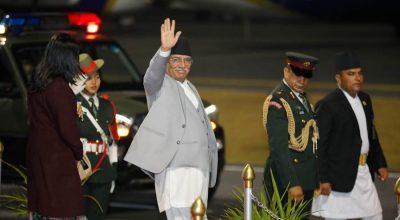Reporters and editors are relying on past experience to serve new roles created to cover the pandemic.

Times Insider explains who we are and what we do, and delivers behind-the-scenes insights into how our journalism comes together.
As the novel coronavirus spread to all parts of the globe, the task of reporting a story of extraordinary magnitude enveloped the New York Times newsrooms.
Journalists across more than a dozen departments, and a few continents, are stepping up — and shuffling roles — to meet the challenge.
Writers from Styles and Express (a breaking news desk) are now reporting for the Metro desk. Journalists from Sports and Culture are overseeing live briefings for International.
ADVERTISEMENT
“It’s a massive effort across multiple desks to get everybody on the same page, communicating and getting a work flow process in place,” said Melissa Hoppert, a senior editor for digital storytelling and training. She and several colleagues are handling the logistics of reorganizing the newsroom and temporarily reassigning beats.
It is the live briefings — constantly updating articles that are organized by topic — that are the vehicles for much of The Times reporting during the unfolding crisis. And they have blurred the normal lines between departments at the news organization.
Ms. Hoppert and others have kept a list of reporters and editors they can tap to cycle in and out to work on the briefings. That list has grown daily.
The live briefing format’s utility during an expansive news event was made clear in The Times’s Washington bureau, during President Trump’s impeachment trial. The look and feel of the web page was shaped with the help of Steve Duenes, a deputy managing editor who oversees visual journalism.
The Times’s first coronavirus live briefing was launched by the Hong Kong bureau on Jan. 23, in the early days of the outbreak when Covid-19 cases were still largely confined to mainland China. It has been running every day, all day since, managed in shifts between Times newsrooms in Hong Kong and London and the headquarters in New York. The coronavirus briefing has engaged a global online audience in a way unlike anything before it.
ADVERTISEMENT
“It’s the longest running live thing The Times has ever done,” said Rebecca Blumenstein, a deputy managing editor. “We’ve never done anything of this scale before.”
The Times is producing two additional live briefings — one covering the global financial markets and the other focusing on the growing health and economic emergency affecting New York City. Kim Fararo, an International editor, leads the main coronavirus live briefing, working closely with National and other desks, and in tandem with Dagny Salas, an editor from the Express desk, and Andrea Kannapell, a Briefings editor.
Editors and reporters from nearly every desk have volunteered to help lighten that workload. Others, particularly those with experience covering breaking news, were drafted to serve on the digital front lines.
Michael Cooper, who covers classical music and dance for the Culture desk, was recently assigned to the International briefing as a rewrite reporter, which requires him to swiftly process and report on a deluge of information.
“It’s like drinking from a fire hose,” Mr. Cooper said.
The job is in his wheelhouse. Previously for The Times, Mr. Cooper worked as a national correspondent, a city hall reporter, a political reporter covering presidential campaigns and as the Albany bureau chief.
“It’s not just about what’s happening on Capitol Hill, it’s what’s happening on Downing Street, it’s what’s happening in the Élysée Palace, it’s what’s happening in China, what’s happening on the medical front. It’s a billion things happening,” Mr. Cooper said.
Many others are repurposing their skills.
Karen Zraick, a reporter on Express in New York, was sent to Hong Kong in February to assist with the briefing effort. Before her days on Express, Ms. Zraick had been an editor on International. When she returned to New York from Hong Kong in early March she stayed part of the International briefing effort.
ADVERTISEMENT
“Everything that I’m reporting now happened in China in January,” Ms. Zraick said.
Ben Hoffman, a senior editor who has worked on the Sports desk for the last 15 years, has a background in news and pop culture criticism. He recently oversaw Changing Lives, a live-blog that told stories that spotlight the way the outbreak is rapidly transforming American life.
Mr. Hoffman conceived the blog as the place where the cascade of canceled events, games and tournaments in the sports world would live. As more of life was upended — music festivals postponed, St. Patrick’s Day parades canceled, Broadway shuttered, and on and on — the blog’s scope broadened.
“We were trying to strike a balance between different sections, understanding what their priorities might be and what their angles might be,” Mr. Hoffman said.
The coronavirus report will continue to evolve in real time. The Times stopped running Changing Lives this week, and the type of news stories that fed the blog will merge into other projects. Mr. Hoffman now works on the At Home initiative, which helps many readers adapt to the new confines of their sheltered lives.
What makes this expanded effort even more extraordinary is that all the work has been executed without an active newsroom. The Times asked all employees to begin working from home by March 13.
“We’re pretty used to improvising,” Mr. Cooper said. “When I used to cover plane crashes, you would make a little bureau on a folding table at some disaster site and work from there. We’re used to doing things from strange places.”
Follow the @ReaderCenter on Twitter for more coverage highlighting your perspectives and experiences and for insight into how we work.








प्रतिक्रिया दिनुहोस्